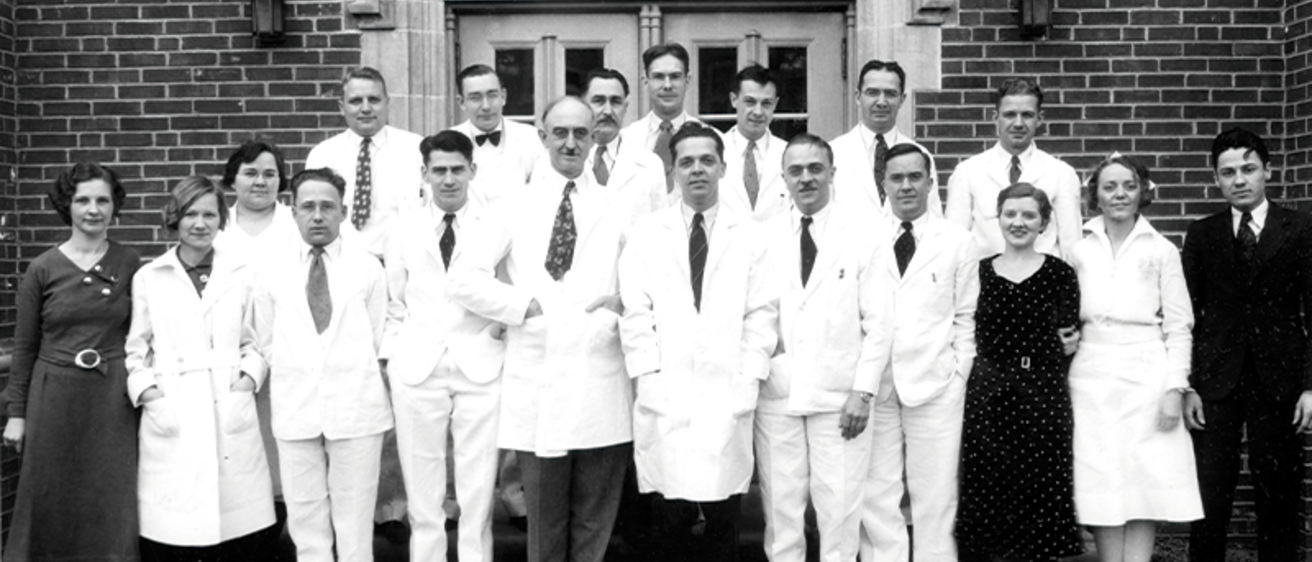Main navigation
Table of contents:
Timeline 1925 to 1934
In 1925 Dr. Cecil Starling O'Brien was hired as the first department head of the brand new University of Iowa Ophthalmology Department. He then spent the next two years in Europe learning from some of the top ophthalmologists in the world. When he returned to Iowa City in 1927, the University of Iowa Ophthalmology Department officially open their doors.
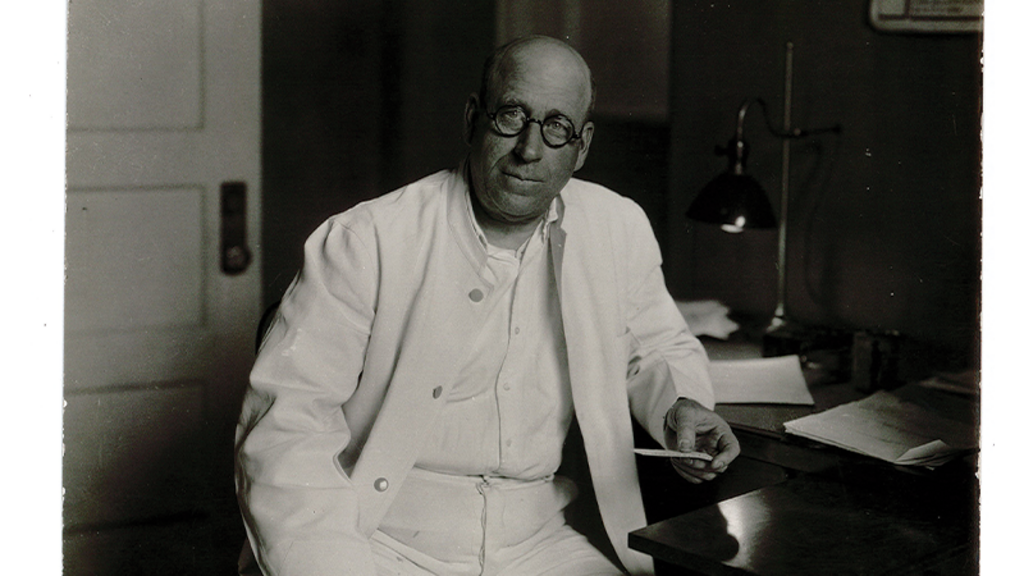
1925 - Ophthalmology and Otolaryngology departments formed
1925Under the direction of College of Medicine Dean Lee W. Dean, MD (pictured) the Department of Ophthalmology and Department of Otolaryngology are established as independent academic units. Prior to their establishment, ophthalmology and otolaryngology functioned under the rubric of the eye, ear, nose, and throat service, which included head and neck surgery. Under the new administrative structure, Cecil S. O’Brien, MD, is hired as head of the Department of Ophthalmology, and Dean oversees the Department of Otolaryngology.
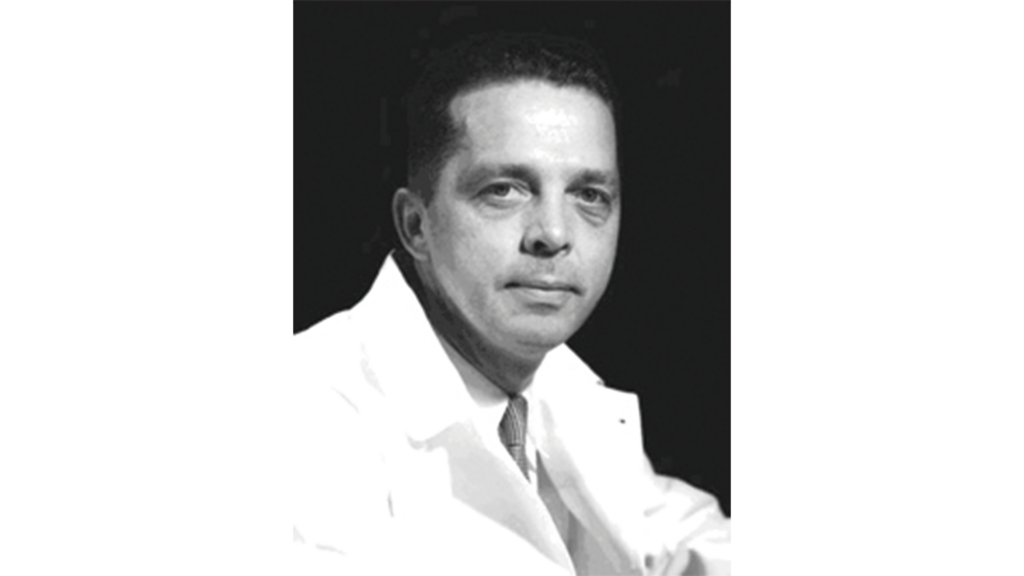
1925-1927 - C.S. O'Brien, the head of the new ophthalmology department, received a grant to study pathology and surgery in London, Prague, and Vienna
1925-1927When he was promised the job of Head of the new Ophthalmology Department in 1925, Dr. O'Brien's goal was to establish an outstanding Department of Ophthalmology at Iowa. He realized that, for this job, he would need additional training. Through the Rockefeller Foundation, Dr. O'Brien received a grant to study pathology and surgery in London, Prague, and Vienna. His study and his plans were influenced by Herbert Parsons of London, Anton Elschnig of Prague, Ernst Fuchs and Maximilien Salzman of Vienna. In 1927 he returned to Iowa City.
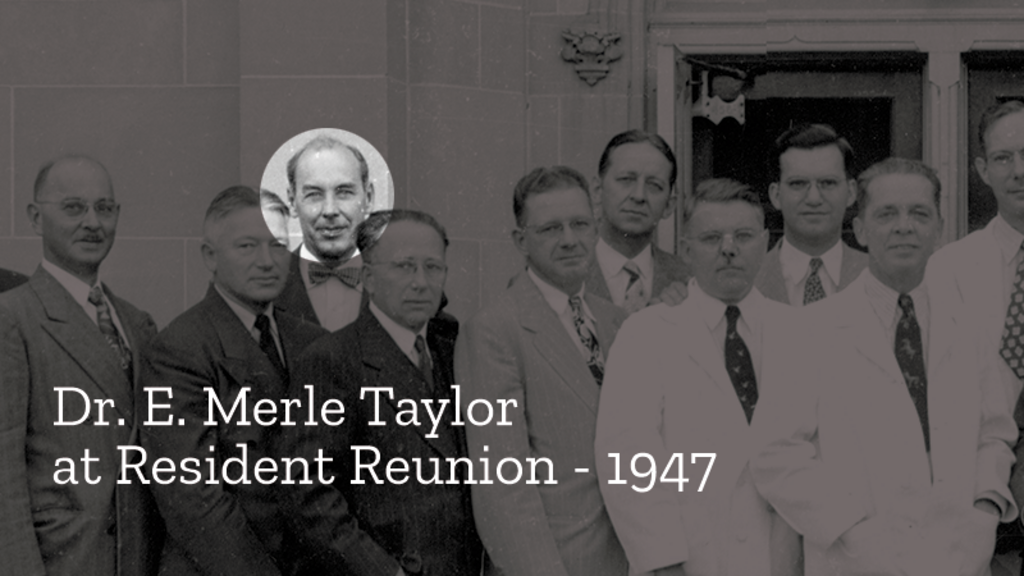
1927 - Ophthalmology Residency Program Forms
1927In 1927 O'Brien chose Merle Taylor (pictured) from Oregon as his first resident before the new University Hospital was built. A new resident was selected every six months and rotated through the program. Dr. O'Brien felt that if he selected residents from different states, Iowa's reputation in ophthalmology would be spread far and wide. This philosophy produced many department chairmen including James H. Allen (Tulane University), Alson E. Braley (New York University and later University of Iowa), Kenneth C. Swan (University of Oregon), Thomas D. Duane (Wills Eye Hospital), Philip P. Ellis (University of Colorado), Phillips L. Thygeson (Director of the Proctor Foundation at the University of California, San Francisco).
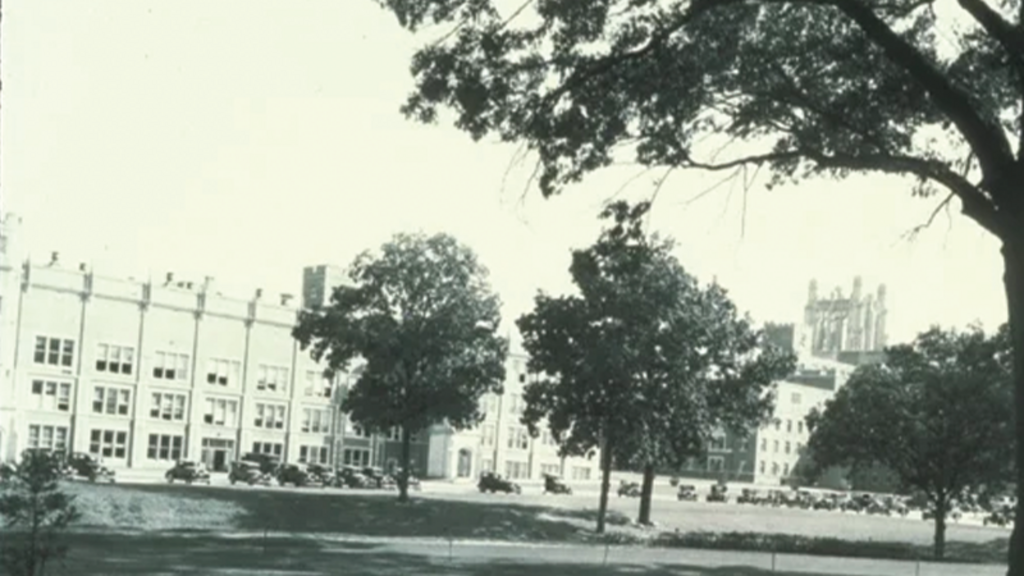
1927 - Medical Laboratories Open
1927Funded by the state of Iowa and a grant from the Rockefeller Foundation, Medical Laboratories initially contained the university’s medical library and the Iowa State Board of Health Laboratories. Research labs and administrative and faculty offices now are housed in the facility.
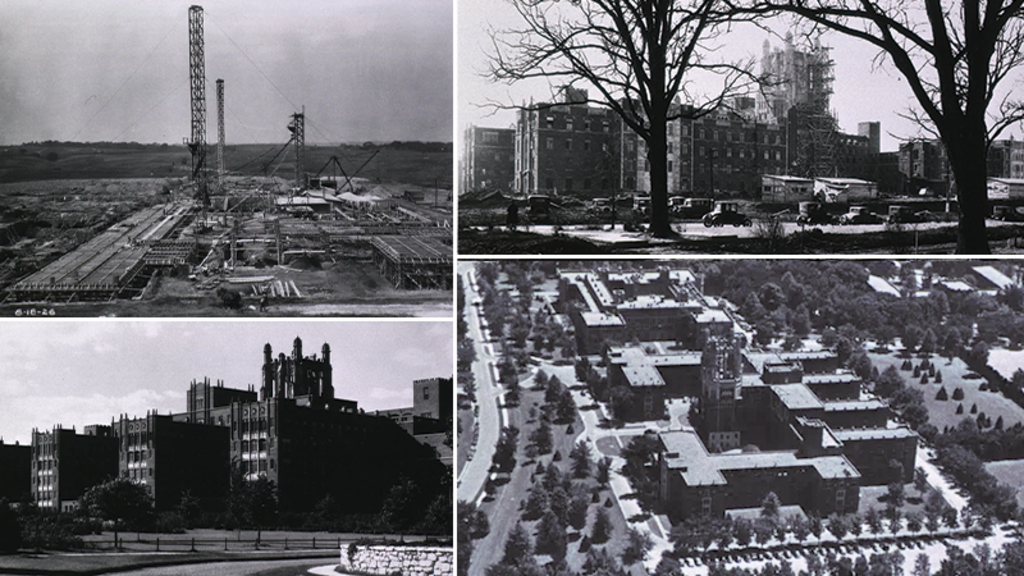
1928 - The seven story, 900-bed General Hospital opens
1928The 900-bed General Hospital opens, greatly increasing clinical teaching opportunities for students and trainees.
University of Iowa's Ophthalmology Residency Program Forms
Dr. O'Brien had definite ideas about how to teach ophthalmology and wanted his program to be one of the very best. He structured the program so that each resident was trained thoroughly with a gradually increasing sequence of responsibilities. Lectures in the basic sciences of pathology, histology, pharmacology and optics were given every afternoon. First year residents were put to work doing complete ocular examinations (mostly on university students) including refractions and some visual fields. Later in the first year they began to do simple surgery of the extraocular muscles, enucleations, and some lid procedures to learn the mechanics and fundamentals of ophthalmic surgery. They began cataract surgery in the second year. Research was encouraged, but it was not permitted to interfere with patient care.
Dr. O'Brien felt that if he selected residents from different states, Iowa's reputation in ophthalmology would be spread far and wide.
In 1927 Dr. O'Brien chose Merle Taylor from Oregon as his first resident before the new University Hospital was built. A new resident was selected every six months and rotated through the program. Dr. O'Brien felt that if he selected residents from different states, Iowa's reputation in ophthalmology would be spread far and wide. This philosophy produced many department chairmen including James H. Allen (Tulane University), Alson E. Braley (New York University and later University of Iowa), Kenneth C. Swan (University of Oregon), Thomas D. Duane (Wills Eye Hospital), Philip P. Ellis (University of Colorado), Phillips L. Thygeson (Director of the Proctor Foundation at the University of California, San Francisco).
O'Brien was a strict disciplinarian and was said to have run his department like the Marine Corps. The residents respected and adhered to the policies and routines established by Dr. O'Brien. Residents were expected to be present and on time wearing a tie and a clean white coat regardless of outside factors such as their own weddings, floods, or department parties the night before. First year residents were required to live in the hospital (that's why they were called "residents" after all). If a resident wished to be married and wanted to stay in the program, he needed to have O'Brien's—generally reluctant—approval.
"He gave me hell during practically every surgery. Finally I said, 'Dr. O'Brien, I thought I was doing everything you wanted me to do. Why do you still give me hell?' Dr. O'Brien replied with a characteristically rough compliment, 'Otis, I just want to remind you that it costs me a lot of effort to give you hell. So if I chew you out, it is because I think you are worth the investment.'"
Many of his former residents mentioned in interviews that they had concerns as new residents about having to work with O'Brien, but all were quick to say that their fears soon resolved into respect for his knowledge and for his determination to train residents well.
Morning rounds began at 8:00 a.m. sharp, seven days a week, even on Sunday.
Daily routines were established and very strictly followed. Many of these routines are still practiced today at the University and many are carried on at other academic facilities influenced by Iowa. Morning rounds began at 8:00 a.m. sharp, seven days a week, even on Sunday. Patients were brought into the clinic for these rounds. Everyone then had the opportunity to see all the interesting patients and discuss the problematic cases. When Dr. O'Brien asked a question, the resident was expected to provide an answer complete with a reason or explanation. Following the presentation of cases in the clinic, the residents followed O'Brien to the ward to examine the post-operative patients that were still confined to bed. On Sundays, a paper was given by one of the residents. During the week, daily lectures were given promptly at 4:00 p.m. in the lecture room. If clinic patients were not finished in time for the lecture, the patient was asked to wait until after the lecture. The lecture topics were chosen by Dr. O'Brien, but the lectures were given by the faculty.

O'Brien with his faculty (P.J. Leinfelder, Jimmy Allen) and residents in 1940
Dr. O'Brien supported and encouraged his residents, yet he demanded perfection. He was himself a facile surgeon and he would not tolerate work below his standards. Residents began by helping Dr. O'Brien in the operating room, first as a surgical assistant and then, on all except private patients, doing increasing amounts of the operation. They were expected to have read up on the procedure and to be alert enough to be helpful and to be cool enough to withstand sharp orders and reprimands.
O'Brien was a strong, forceful disciplinarian. Dr. Otis Lee (resident, 1941-1944) remembered Dr. O'Brien's method of discipline. "He gave me hell during practically every surgery. Finally I said, 'Dr. O'Brien, I thought I was doing everything you wanted me to do. Why do you still give me hell?' Dr. O'Brien replied with a characteristically rough compliment, 'Otis, I just want to remind you that it costs me a lot of effort to give you hell. So if I chew you out, it is because I think you are worth the investment.' "
When not in the clinic, Dr. O'Brien was gracious, friendly, and helpful. He hosted parties for the residents and faculty at his home in the country every week or two. Although these parties lasted until late at night, the residents and faculty were expected to report on time for morning rounds the following day.

An annual reunion of former residents was held at his home. Many alumni returned for these reunions to share stories with the current residents.
*This sketch of Dr C.S. O'Brien and the residency program was adapted from a paper by Drs. John C. Lee and H. Stanley Thompson published in Documenta Ophthalmologica 94: 161-178, Jan 1997 and read at the tenth annual meeting of the Cogan Ophthalmic History Society, Philadelphia College of Physicians, March 8 and 9, 1997.
Quotes from Dr. O'Brien's Residents
From 1993 to 1996 Dr. John C. Lee did video interviews with many of Dr O'Brien's former residents. Here are some quotes from those interviews.
He was the John Wayne of Ophthalmology...He made his Department of Ophthalmology internationally known within just a few years.
Some of the University staff did not like him because he always seemed to get what he wanted from the Dean. Some patients did not like him because he expected his patients to always follow instructions. If they did not, he lectured them. If people liked him, OK, if not, he didn't care or let it bother him.
Dr. O'Brien used his farm and gardening hobby to get to know the faculty and residents, and they in turn got to know him. He worked with the residents and staff weeding, talking, harvesting, and doing other gardening duties, especially during the World War II years. Everyone benefited from this activity. At annual reunions, some of the alumni would come early to help in OB's garden and catch up on the latest news.
Anyone who trained under Dr. O'Brien was highly respected ...Candidates clamored to get into the program.
Dr. C.S. O'Brien enjoyed people. He took a personal interest in his residents, encouraged them, in some situations made connections to help finance them, and he was intensely proud of them.
OB had a strong will, an Irish temper, and a dynamic personality.
Although he could be charming, O'Brien seemed to impress people with his knowledge. He was confident in his manner and wasted no words.
Some of his residents may not have liked him, but they all respected him. They dared not cross him. He was the boss and he was always right.
